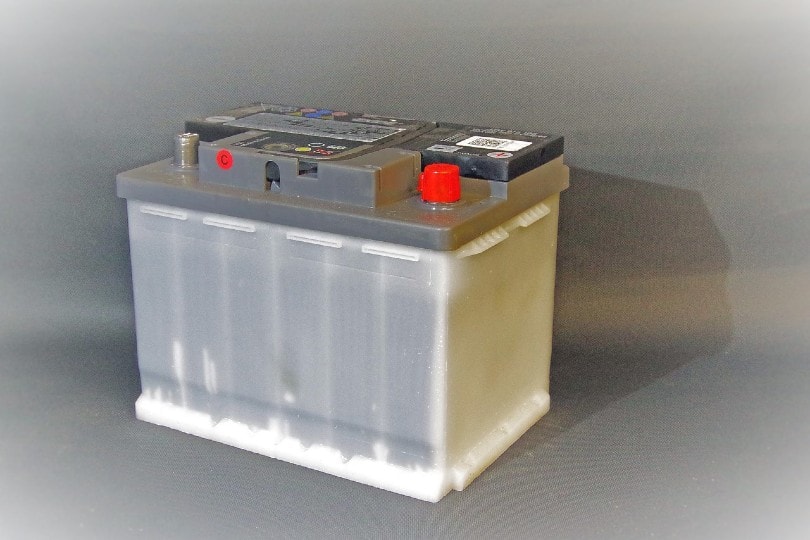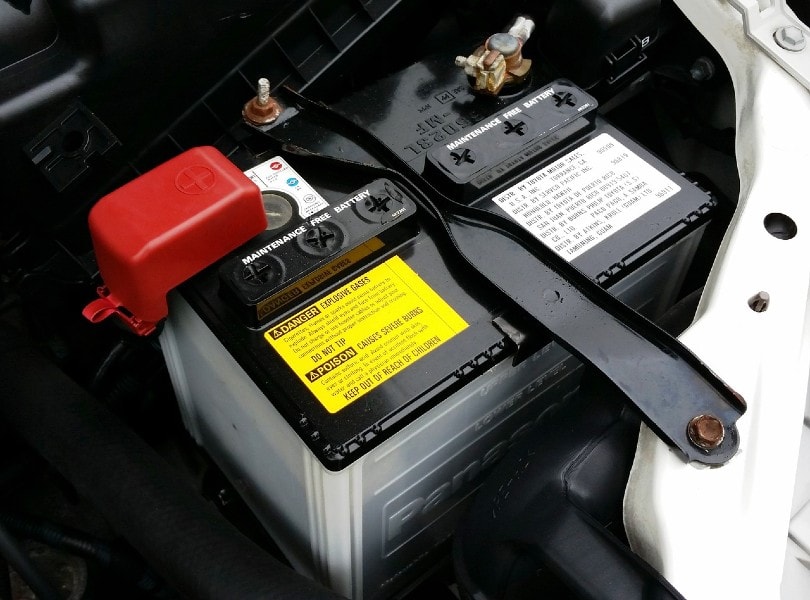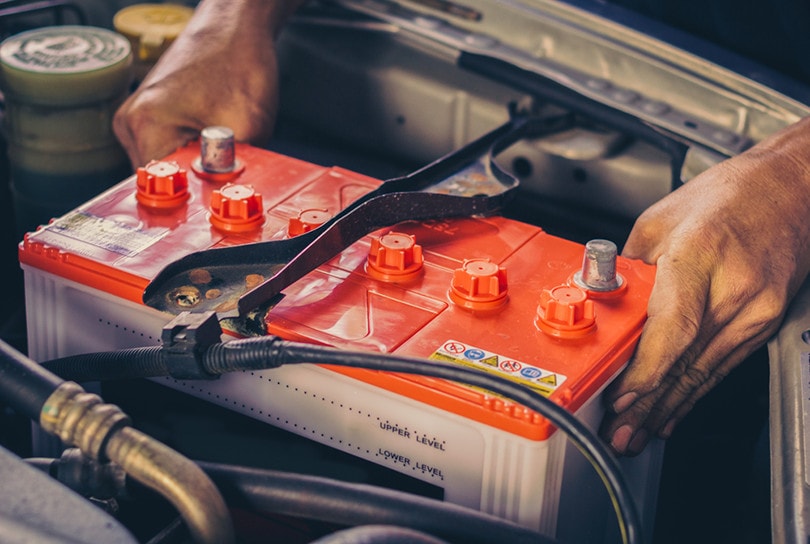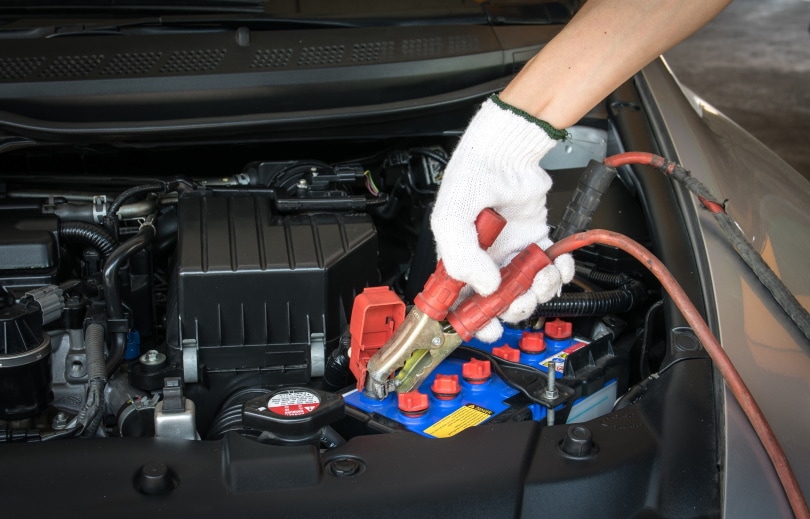How Many Watts Are in a Car Battery? Factors, Capacity, & Types
-

- Last updated:

We’re often asked this question, and the answer has never changed. It all depends on what type of battery you’re going for because car batteries are like most products—diverse. Some are only capable of storing 1,000 watts, while others have 6,000.
This is one of the most commonly asked questions in the automobile industry, and we think it’s because people use car batteries to power up other appliances. Regardless, it’s still important to have this information.
Today’s post will be special in the sense that you’ll not only be learning about the wattage in a car battery, but also some of the things that you ought to take into consideration while shopping for one.
But first, to ensure we’re all on the same page, we have to define some of the terms used to describe the capability of a car battery.
Capacity
In simple terms, the capacity is the amount of charge that has been stored in your car battery. And if you’d like to calculate it, you’ll have to take into consideration the mass of the active material within your battery.
Some petrolheads like to think of it as the length of time that a car’s battery can comfortably supply its watt rating, before requiring a recharge or becoming depleted. And that’s also right, just another way of describing it.
But what’s more important to note is that the actual storage of your battery will vary, as it hinges on its nominal voltage. Why, you ask? Well, that’s because the battery capacity is primarily influenced by its history and age. Other factors include the working conditions and its charging/discharging cycles.
Seeing as the car battery’s capacity is a measure of charge, it’s only appropriate for it to have an SI unit, right? And it does, save for the fact that it has three instead of one.
Depending on your preference, you could either work with ampere-hours, kilowatt-hours, or watt-hours. We usually prefer the ampere-hours for one reason—the battery has a varying voltage across its charging/discharging cycles.
If we ever meet a client who prefers working with watt-hours, we simply multiply our ampere-hours by the battery’s nominal voltage, to convert it. And if we’re looking to eliminate any margin of error in our battery capacity calculations, we’d multiply the ampere-hours by nominal voltage, and then divide that whole thing by what we have as the charging cycle lifetime.

Voltage
Voltage is another term that we’d like you to get acquainted with. As we said, there are different types of car batteries, with varying voltages. Most of the cars being driven on our roads have a 12V battery, but a fully charged car battery will indicate that it has a voltage that lies between 13.7 to 14.7 volts.
If we were to define this concept using layman’s terms, we’d say your battery’s voltage is the difference between the negative and positive terminal. That difference is normally referred to as the electrical potential of the battery, and its size is what sways your voltage reading.
Side Note: The terminals of a car’s battery are always separated to allow the electrons to seamlessly move from one end to the next.
How Many Watts Can Be Found in a Car Battery?
Your conventional car battery will have a minimum of 1,000 watts, but if it’s meant to power up a heavy-duty vehicle or if it’s designed to operate in cold climates, the wattage will range from 4,000 to 6,000. Being a unit of power, the wattage represents the power quantity produced by a particular battery.
Calculating the watt in your car battery shouldn’t feel like a hassle if you already have two components of the three-part equation. The equation is:
Watts = Amps x Volts
So, let’s say you’re thinking of buying a 12-volt standard battery that has a 200-amp rating. All you have to do is multiply the 12 by the 200, and the result will be the wattage, which is 2,400.
 Factors to Take into Consideration Before Buying a Car Battery
Factors to Take into Consideration Before Buying a Car Battery
Maintenance
There’s no point in going for a low-maintenance battery if a maintenance-free battery is available and can get the job done. Or haven’t you ever heard of cost-effectiveness? You always have to find a way to minimize the costs of operations, while maximizing the benefits.
Take maintenance-free batteries, for example. These batteries don’t normally require any liquid electrolyte to power them. On top of that, they usually come sealed, meaning you’re not expected to replace anything at any given point in their lifespan.
If you take the low-maintenance route, you’ll have to refill them using distilled water every now and then. The first thing that you’ll take note of is the unsealed cap, meant to give you access to the battery’s internal components. You’ll be expected to remove the cap anytime you suspect something malfunctioning inside, or when the battery is due for a refill.

Battery Type
When it comes down to choosing the appropriate type of battery for your car, limit your options to the most common types. A faulty battery will put a huge load on your alternator, consequently leading to an overload. By the time you realize what’s going on, it would be too late.
Flooded Lead Acid Battery
We are going to kick this off with the oldest battery on the market. The Flooded Lead Acid is also known as the SLI battery, and that acronym stands for Starting, Lighting, and Ignition. In this battery, you’ll find 6 cells. Each one of them will have water combined with sulfuric acid, and the ability to supply a 12.6 voltage in optimal conditions.
Silver Calcium Battery
Silver calcium is an advanced iteration of the flooded battery. It still relies on an electrolyte solution to power up, but there are no lead-antimony plates installed. Those have been replaced by calcium-silver plates, which are more efficient. We’d encourage you to go for this type of battery if you get the chance, seeing as it’s maintenance-free and sealed.
They are also known to have a relatively higher degree of resilience to high temperatures and are resistant to corrosion. The only drawback is, they deteriorate a lot quicker due to sulfation.

Gel Battery
There was a time when the market yearned for a non-spillable battery. The wet cells were okay, but we felt like we needed more. Those noises grew into rumbles and that’s how the gel cell batteries were born. The gel cell is a type of VRLA battery, with silica in the electrolyte solution.
VRLA means Value Regulated Lead-Acid, and the silica addition is the reason why the solution is gel-like. This type of battery is very resistant to shock or vibration and has an incredible cycle life.
Deep Cycle Battery
With the deep cycle, you have options. you can either go for the sealed version or the flooded iteration. Regardless, they both have a denser active material and the cells come with thicker plates. All you have to remember is that these types of batteries are designed for recreational and marine vehicles. In fact, that’s why you keep hearing people refer to them as marine batteries.
Lithium Ion Battery
The Li-Ion battery is synonymous with electric and hybrid cars. We love them because their charging times are shorter, in addition to the fact that they store more energy. And compared to your typical batteries, they are also lightweight and have recyclable parts. Their price tag is the only demerit that we could think of.

Reserved Capacity
The reserve capacity is definitely a serious factor because it determines the battery’s main standing power or if it can run itself. It’s also important to ensure the vehicle’s productivity is generally high, especially while working on daunting tasks. Thus, guaranteeing reliability and dependability.
Service Life
How many years will the battery serve you? 5 to 8 years like the lithium-ion battery? Or will it tap out after 2 to 3 years? and just so you know, your car’s shelf life will indirectly influence its battery life. Needless to say, a shorter battery life correlates to a shorter battery lifespan.
Price
Last but not least, we have the price tag. And the battery’s price will vary, as it largely depends on the brand, type, and size. If you’d like to play the safe card, go with a top brand or one that’s being used by several other consumers. We however must remind you that a higher price doesn’t necessarily translate to a high-quality battery.
 Wrapping Up
Wrapping Up
We felt the best way to wrap this up is by sharing tips that you could use to prolong your vehicle’s battery life. So first off, always make sure that it’s free of corrosion, and grime. If that means cleaning it five times a week, so be it.
Secondly, make sure all the connections are tightly fitted and the fluid levels are where they are supposed to be. And lastly, even if you’re not planning to use it, make sure it’s fully charged.
Featured Image Credit: kaboompics, Pixabay
Contents

